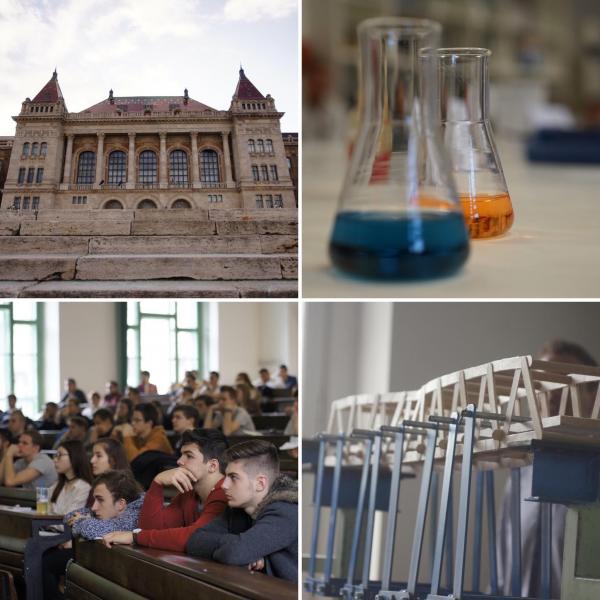Research topics and areas

Department of Engineering Geology and Geotechnics
Measure and model the geotechnical and engineering geological environment, assess natural hazards of built environment.
Stability analysis of underground structures and slopes
Numerical modelling of geotechnical problems
Corrosion of glass used for radioactive waste disposal influenced by environmental parameters
In-situ and laboratory characterisation in geotechnical engineering
Diagnostics and laboratory testing of stone, mortar and historic structures
Geological hazards and environmental geology
Rock mechanics, radioactive waste disposal
Department of Construction Materials and Technologies
Development and assessment of innovative building materials and building constructions, sustainable and energy efficient solutions.
Non-destructive testing methods
Light weight aggregate concrete, recycled aggregate concrete
Development of innovative building materials and constructions, innovative glass structures
Life Cycle Assessment (LCA) of building constructions and whole buildings
Department of Hydraulic and Water Resources Engineering
Improve our understanding of the physical water environment, develop methods of analysis for water management stakeholders.
Chaotic mixing in surface waters, Lagrangian fluid dynamics, experimental and simulation.
Lake hydrodynamics and its links with the atmosphere, vegetation and sediments.
River hydromorphology and ecohydraulics, river navigation, innovative field methods
Flood hazard mapping, floodplain hydraulics, real-time flood forecasting, probabilistic methods
Catchment hydrology, evaporation estimation using remote sensing
Hydrogeology of porous and fractured rocks, interaction of surface waters and groundwater
Department of Geodesy and Surveying
Advancing positioning and mapping technology and improving our understanding of the Earth System.
Geodetic displacement and deformation monitoring and early warning systems
Positioning and Navigation Systems
Engineering surveying with sub-mm accuracy
Geophysics: remeasurement of the Eötvös Experiment, and Eötvös-Pekár-Fekete equivalence experiment
Department of Structural Engineering
Development, improvement and application of advanced design methods for steel, concrete, composite and timber bridges and buildings.
Advanced numerical modelling based design of steel structures
Structural behaviour under extreme loads
Plated structures – stability and fatigue
High strength steel structures
Cyclic behaviour of steel structures
Fire design of steel structures
Numerical welding simulation techniques
Innovative steel-concrete composite structures
Strength of reinforced concrete structures
Department of Sanitary and Environmental Engineering
Optimising urban water cycle: teaching, science for action and decision support.
Asset Management for Water supply and Wastewater Infrastructure
Accessing water quality, eutrophication of lakes and rivers, river basin management planning
Urban road runoff, nonpoint pollution, nutrients and heavy metals
Department of Photogrammetry and Geoinformatics
Improve our understanding of sensing and mapping of our environment, develop methods to capture high quality data sets, to establish value-added geo-related analysis in various applications
Airborne and terrestrial laser scanning, Unmanned Aerial Vehicle (UAV) photogrammetry
Efficient data capture technologies and data base creation for Building Information Modelling (BIM)
Artificial intelligence in civil engineering tasks
Digital elevation modelling of Earth surface, bomb crater detection by surface analyses
Data representation and modelling in Geographic Information Systems, data quality models
High definition mapping technologies for autonomous and highly automated driving
Agent based modelling in GIS systems
Department of Structural Mechanics
Employ mechanics from historical to modern structures, from education to research, from preserving traditional values to exploring new areas.
Department of Highway and Railway Engineering
Improve our understanding of the behavior of railway track and road structures, develop methods for planning and developing transport networks.
Railway track condition monitoring
Railway track and bridge interaction
Traffic capacity of intersections
